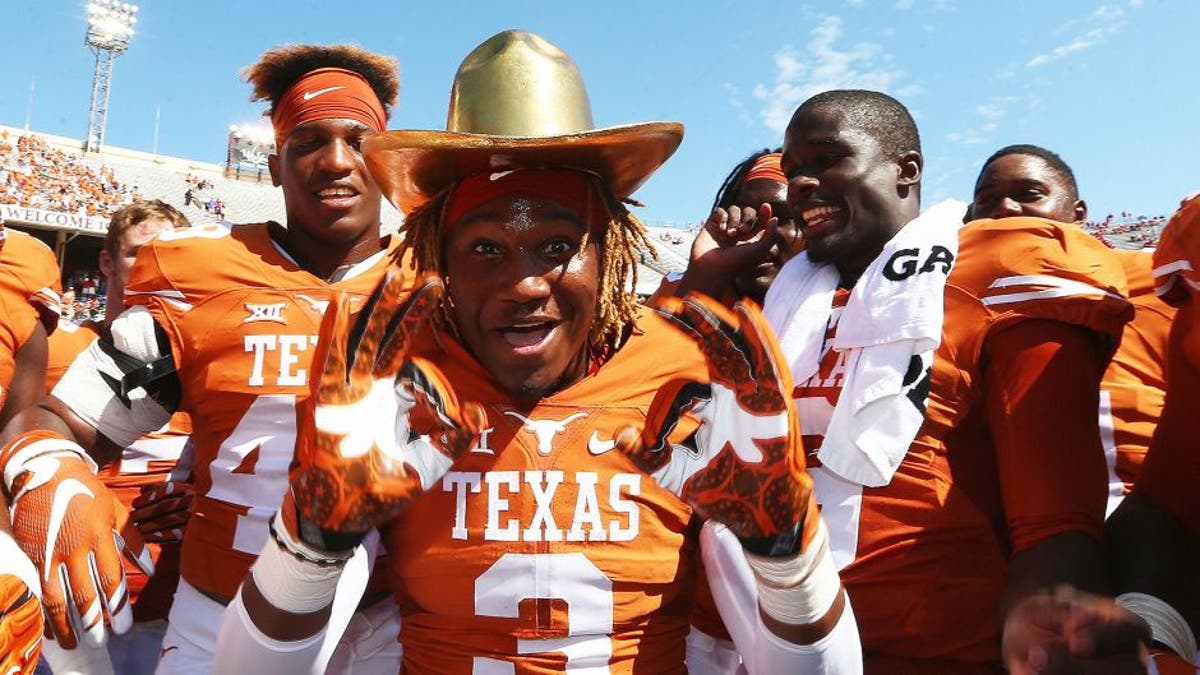
The Big 12 will not only bring back a championship game in 2017, but it likely will form two five-team divisions. Which means we get to start playing the always-fun parlor game of telling the conference exactly how they should do that.
Once upon a time, splitting a college football conference into two divisions did not require a whole lot of brainpower. The SEC in 1992 and the Big 12 four years later employed logical, easy-to-remember geographic configurations. The Big 12's six Texas and Oklahoma schools were definitively south of those in the North division. And while Auburn is slightly east of Vanderbilt, pairing it with Alabama justified placing the Tigers in the SEC West.
Then conference realignment went batty, and every divisional formation since has been a political and/or geographic headache.
The ACC in 2005 decided its top priority would be to place powerhouse rivals Florida State and Miami in opposite divisions in hopes they'd play a second high-wattage game most years. (Miami, 11 years in, has yet to make an appearance.) That alone negated any chance of splitting things geographically, resulting in the seemingly randomized Atlantic and Coastal divisions that remain today, though now with 14 teams.
It's worked so well that North Carolina (Coastal) and Wake Forest (Atlantic) will soon stage a non-conference series due to the fact they meet so rarely.
The Pac-12 had all sorts of logistical hurdles to deal with upon adding Utah and Colorado in 2011 -- in addition to protecting rivalries like USC-UCLA and Cal-Stanford, for recruiting purposes, the Northern schools wanted to maintain their presence in Southern California. At that point something called the "zipper plan" was discussed.
Ultimately, the league went with a relatively simple North-South split (though North members Cal and Stanford are technically south of Colorado and Utah.)
Big Ten commissioner Jim Delany in 2011 became the first to try to consciously instill competitive balance, splitting traditional powers Ohio State and Penn State from Michigan and Nebraska. The result was disastrous, partly because the groupings were impossible to keep straight but mostly because of the regrettable Legends and Leaders names.
Three years in, that conference pivoted to a more traditional East and West, and in doing so putting Ohio State, Michigan and Michigan State on the same side.
The Big 12 will not likely have the luxury of a straight geographic split, because it now has six Texas and Oklahoma schools but just three former North Division members (Kansas, Kansas State and Iowa State) plus outlier West Virginia.
It's also in a different position than any conference before it. The 10-team league doesn't have to worry about protecting certain rivalries over others because it's keeping a round-robin schedule. Every school will play everybody else every year, regardless of its division.
That being the case, you could theoretically just draw names out of a hat.
But as the Big Ten learned, it's still important to group schools with some sort of commonality if you're trying to gain public acceptance. And while a conference championship game rematch is unavoidable, in an ideal world the two would not have just played a week or two earlier.
That part can be easily accomplished by making schedules where the five cross-divisional games are played in September and October followed by each team's four intra-division games in November. That in turn will likely produce de facto division championship games late in the season.
With that goal in mind, here's how the Big 12 should divide the teams.
-- First of all, league heavyweights and archrivals Texas and Oklahoma should be in opposite divisions. For one thing, the Red River game in Dallas is always played in early October, so if the two do meet again there would be a decent amount of separation. And let's be honest, TV would love for them to meet again.
And while Texas has been in a down cycle this decade, generally these two have been the conference's flag-bearers. Placing them in opposite divisions gives the conference a better chance of divisional balance.
-- Conversely, because rivals Oklahoma and Oklahoma State usually meet Thanksgiving weekend, they should be kept together so as not to play again a week later. It will also help fans remember which side is which.
So here's where we are at this point:
-- Since Texas A&M left the Big 12 five years ago, Texas has rotated playing Texas Tech or TCU on Thanksgiving weekend. Let's make Tech its permanent rival going forward, for reasons that will become clear in a moment, and place the Red Raiders with Texas in Division B.
-- While the dates of their games have been all over the map, TCU and Baylor have forged nothing short of a blood rivalry since the Horned Frogs joined the conference. Let's try to keep it that way post-Art Briles.
TCU and Baylor also join the other two Texas schools in Division B and also play annually Thanksgiving weekend.
-- Though not exactly Auburn-Alabama, Kansas-Kansas State should remain an intra-division rivalry and join Division A. Again, grouping together in-state rivals makes it that much easier for fans in other parts of the country to keep the divisions straight.
Here's where we are now:
-- That leaves Iowa State and West Virginia, neither with a strong connection to either grouping. But let's keep the Cyclones with fellow North Division legacies Kansas and K-State. West Virginia, by default, gets thrown in with the Texas schools.
All that's left is naming them -- and no, they will not be the Texas and Oklahoma divisions. Simple is better, and history tells us geographic names are the easiest to understand, even if one school (in this case West Virginia) doesn't fall into place.
Presenting the 2017 Big 12:
Disagree? Have other ideas? Sound off in the comments.
